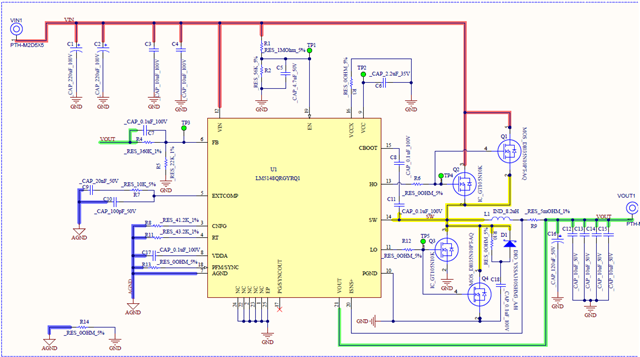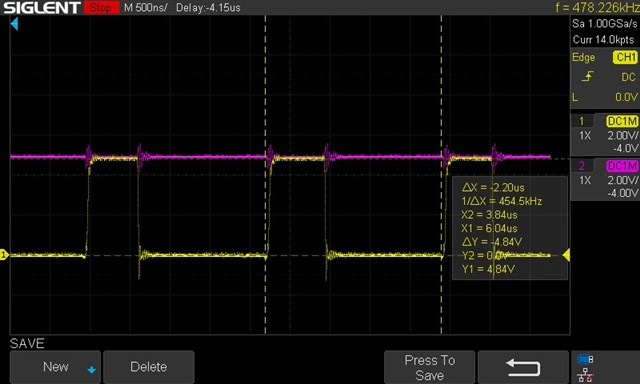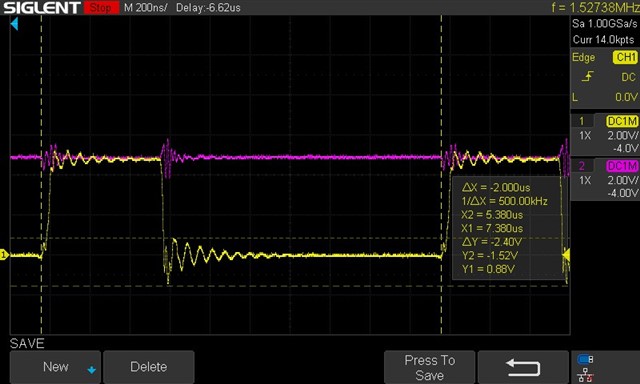Other Parts Discussed in Thread: LM5148, LM5145, CSD19503KCS,
Hi Team,
This is regarding the buck converter
Input Voltage: 40V-60V
Output Voltage: 13.8V
Output Current: 10A (max)
Switching Frequency:500kHz
Gate Voltage: 4.8V (when measured)
I am facing and issue in designing a synchronous buck converter with Gate resistor calculation.
- Theoretically I am getting the max loss of 7-8W but in practical I am facing 10-20W losses at 50V.
- Thermal issue: at 75% of load (7.5A-7.8A) upon 2 hour continuous load test the MOSFET is getting heated upto 150 Degrees
- Can this thermal issue be resolved by increasing the Gate voltage from 4.8V to 10-13V?
- If above case is possible how can we increase the Gate Voltage from 4.8V to 10-13V? Also specify the HO and LO maximum Voltage rating (Driver Voltage).
- What are the HO and LO driver resistance values for the proper Gate resistor Calculation so that Losses and the efficiency are at balance (Not like in the point 1)
Please find the attached Screenshot of the Schematic:

The Resistors R6 & R12 are the Gate resistors replaced by 4.3 Ohm instead of 0 Ohm.
Please provide some clarity on the above questions and also suggest the changes.
Thanks & Regards
Mahankali Nikhilindu Kasyap






